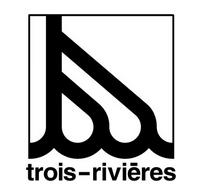RI_541
Type of resources
Available actions
Topics
Keywords
Contact for the resource
Provided by
Formats
Representation types
Update frequencies
status
-
Electoral districts of the city of Trois-Rivières.**This third party metadata element was translated using an automated translation tool (Amazon Translate).**
-

The Green/White Area dataset is comprised of all the polygons that represent the Green and White areas in the province of Alberta for the Department of Alberta Environment and Protected Areas administrative purpose.
-

The Regulatory Assurance Division Region Boundaries dataset is comprised of all the polygons that represent the Environment and Protected Areas Regulatory Assurance Division Region Boundaries within the Province of Alberta. The dataset is to help Government of Alberta Staff in managing workloads within the North and South Regions of Regulatory Assurance Division.
-

Alberta Geological Survey created a coal and coalbed methane (CBM) database to capture and manage CBM data. The database compiles different sources and contains information on 7923 wells (15,200 formation picks, 37,357 coal picks, 495 coal analyses and 363 vitrinite reflectance measurements). From this parent dataset, individual coal zone was evaluated. This record describes the Lethbridge coal zone net coal thickness.
-

In 2014, the Alberta Energy Regulator (AER) initiated a Play-Based Regulation (PBR) pilot project as a step towards implementation of the Unconventional Regulatory Framework. One of the goals of the PBR pilot is to encourage companies in the unconventional play area to work together on plans for surface development to minimize the numbers of facilities and surface impacts. This dataset is one of a series created using earth observation imagery to assess surface change caused by energy exploration. The PBR area extends from Twp. 52, Rge. 7, W 5th Mer. to Twp. 70, Rge. 5, W 6th Mer., covering the towns of Edson, Fox Creek, Mayerthorpe, Whitecourt, Swan Hills, and Valleyview. Landsat multispectral imagery for 2012 and 2013 and land use and land cover classification data derived from 2013 were used to produce this dataset. The land use and land cover changes include vegetation loss from anthropogenic disturbances, such as infrastructure related to oil and gas exploration, forestry and agriculture, and vegetation recovery from these disturbances. This digital data release contains the vegetation loss data, classified into 9 classes: 1 - exposed land/cut blocks/harvested areas, 3 - transitional bare surfaces, 4 - mixed developed areas, 5 - developed areas, 6 - shoal, 7 - shrub land, 8 - grassland and 9 - agricultural areas. These categories can be used as baseline data for planning, managing and monitoring surface infrastructure needs and impacts.
-

The Grizzly Bear Management Areas encompass the Recovery (Core and Secondary Access Management Areas combined), Support, and Habitat Linkage Zones for each grizzly bear subpopulation. The Grizzly Bear Management Areas are the area where the Government of Alberta focuses efforts on grizzly bear recovery and management.
-

This data set comprises the bedrock geology of Alberta in geographic information systems (GIS) format. The GIS coverage was originally prepared by digitizing Map 027, 1972, Alberta Geological Survey, Alberta Research Council. Revisions since 1972 have incorporated new mapping data from work by the Alberta Geological Survey and the Geological Survey of Canada, and by the Canadian Society of Petroleum Geologists through the contribution of its membership to the Geological Atlas of the Western Canada Sedimentary Basin. The coverage shows the formation and geologic age of the bedrock subcrop, as well as the nature of the contacts between formations. GIS files are distributed as shapefiles of bedrock polygons (geol_py_ll.shp), bedrock line features (bdrk_ln_ll.shp), and bedrock contacts (geol_ln_ll.shp).
-

Alberta Geological Survey created a coal and coalbed methane (CBM) database to capture and manage CBM data. The database compiles different sources and contains information on 7923 wells (15,200 formation picks, 37,357 coal picks, 495 coal analyses and 363 vitrinite reflectance measurements). From this parent dataset, individual coal zone was evaluated. This record describes the Mannville Coal Zone's calculated gas in place in BCF/Section.
-

Alberta Geological Survey created a coal and coalbed methane (CBM) database to capture and manage CBM data. The database compiles different sources and contains information on 7923 wells (15,200 formation picks, 37,357 coal picks, 495 coal analyses and 363 vitrinite reflectance measurements). From this parent dataset, individual coal zone was evaluated. This record describes the McKay Coal Zone's calculated gas content.
-

Alberta Geological Survey created a coal and coalbed methane (CBM) database to capture and manage CBM data. The database compiles different sources and contains information on 7923 wells (15,200 formation picks, 37,357 coal picks, 495 coal analyses and 363 vitrinite reflectance measurements). From this parent dataset, individual coal zones were evaluated. This record describes the Drumheller Coal Zone net coal thickness.
 Arctic SDI catalogue
Arctic SDI catalogue
